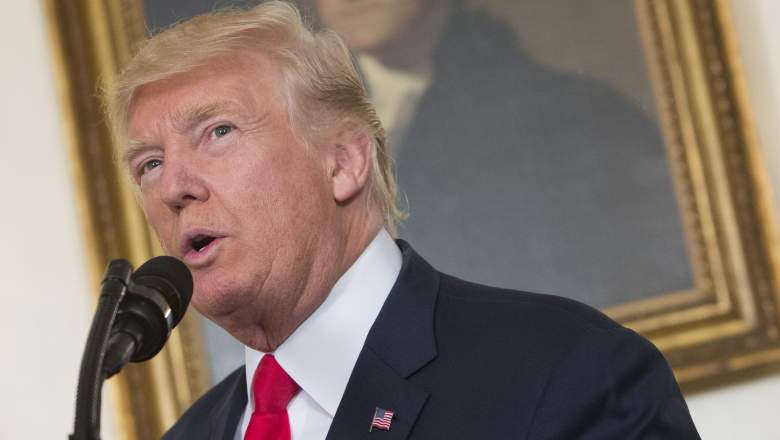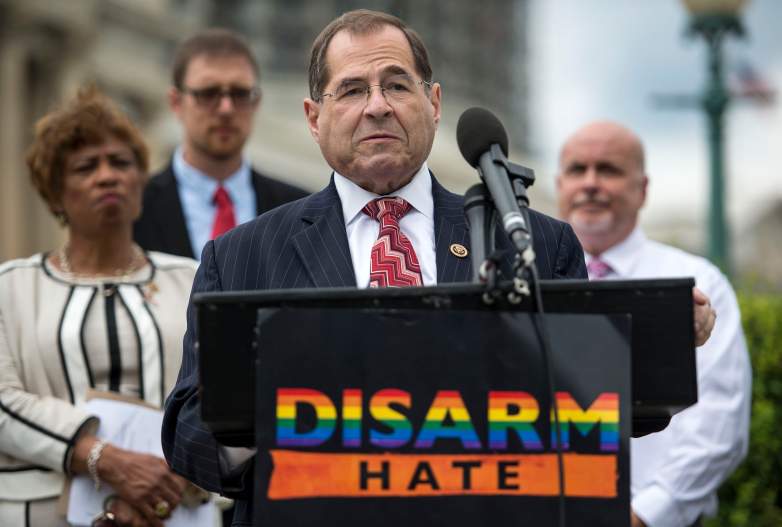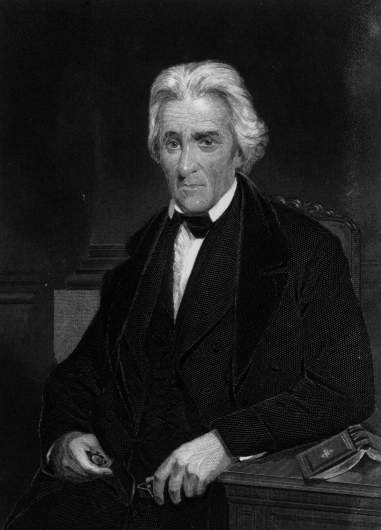
Getty Donald Trump on August 14.
Three House Democrats have announced a censure resolution against President Donald Trump in response to his response to the Charlottesville violence. If it’s voted on, it would be the first time since President Bill Clinton’s Monica Lewisnky scandal.
Rep. Jerrold Nadler, a member of the House Judiciary Committee, was joined by Rep. Bonnie Watson Coleman of New Jersey and Rep. Pramila Jayapal of Washington. Nadler said he plans to introduce the resolution to censure and formally condemn Trump on Friday, August 18 during the House’s next in pro forma sessions.
Nadler confirmed on August 18 that he has 79 cosponsors for the censure. No Republican Representative joined them.
Here’s what you need to know about presidential censures and how they work.
1. Nadler Wants to Censure Trump Over His Charlottesville Response

GettyRep. Jerrold Nadler.
The resolution notes that Trump’s initial response to Charlottesville failed to condemn the white supremacists and neo-Nazis who organized the “Unite the Right” rally and said there was violence “on many sides.” On August 14, Trump specifically condemned the hate groups, but then reverted back to his initial statement during his August 15 press conference. Trump said there were also “very nice people” on both sides.
Nadler, Coleman and Jayapal also note that Trump has “surrounded himself with, and cultivated the influence of, senior advisors and spokespeople who have long histories of promoting white nationalist, alt-Right, racist and anti-Semitic principles and policies within the country.” They are referring to Steve Bannon and Sebastian Gorka.
They say Trump has “failed to provide adequate condemnation and assure the American people of his resolve to opposing domestic terrorism.”
Randy Bryce, who is running against House Speaker Paul Ryan in November 2018, called on Ryan to censure Trump as well.
2. A Censure Is a Formal Condemnation & ‘Less Severe’ Than Expulsion
As the Senate website notes, a censure is “less severe than expulsion” and a formal condemnation or expression of disapproval from Congress. Essentially, it’s what Congress can do before attempting an impeachment.
The Senate has only once censured a president. Back in March 1834, the Senate censured President Andrew Jackson during his second term for refusing to turn over a document.
During Jackson’s first term, he famously vetoed the re-charter of the Bank of the U.S. and it turned into a major issue in his re-election campaign. Senator Henry Clay, who lost to Jackson in 1832, wanted Jackson to present a document he read to his cabinet. After a 10-week debate, the Senate voted 26-20, criticizing Jackson for “assuming power not conferred by the Constitution.” However, in January 1837, Senate Democrats, who had just won back the majority, decided to expunge the censure from the Senate Journal.
3. Since Jackson, No Other Senate Censures Have Been Successful

GettyPresident Andrew Jackson.
Since Jackson’s censure, there hasn’t been a successful presidential censure.
President John Tyler was the first President to take office after the death of an elected president. Tyler often rejected Whig policy, angering his own party and effectively making him a president without one. Whigs in Congress hoped to impeach him, but Tyler served out the rest of President William Henry Harrison’s term. There was an attempt to censure him, but it only succeeded in a Senate Select Committee.
Tyler’s successor, President James K. Polk, also faced a censure attempt. The The House succeeded in reprimanding him for starting the Mexican-American War without Congress’ approval. The House thought that Polk “unnecessarily and unconstitutionally” started the war.
Next, in 1864, there was an attempt to censure President Abraham Lincoln and Secretary of War Edwin Stanton for allowing a House member to remain a commissioned Army officer while serving in Congress. The Senate did approve the censure, but it was taken to a special committee and the issue wasn’t taken up again.
The most recent censure attempt was in 1998, when members of Congress tried to have President Bill Clinton censured for the Monica Lewisnky scandal instead of impeached. However, the House opted to impeach Clinton. The Senate later cleared Clinton of the impeachment charges and he served the rest of his second term.
The Clinton censure attempt failed in a 56-43 vote. It needed two-thirds of a majority to pass.
4. It’s More Common for the House & Senate to Censure Their Own Members
Members of the House and Senate have censured their own colleagues. In that case, the member loses their committee memberships, but continues serving their terms. The ability for the House and Senate to censure its own members is actually in the Constitution, notes the Congressional Research Service, although the word “censure” isn’t used.
As Legal Dictionary notes, the precedent for formal censures began when Treasury Secretary Alexander Hamilton was accused of mishandling congressional loans. The censure didn’t pass though.
The Senate has only censured nine senators and none in the last 25 years. The last Senator censured was David F. Durenberger, a Republican from Minnesota.
Durenberger, who remained in the Senate until his term ended in 1995 and retired from office, was censured for unethical conduct:
“in connection with his arrangement with Piranha Press, his failure to report receipt of travel expenses in connection with his Piranha Press and Boston area appearances, his structuring of real estate transactions and receipt of Senate reimbursements in connection with his stays in his Minneapolis condominium, his pattern of prohibited communications respecting the condominium, his repeated acceptance of prohibited gifts of limousine service for personal purposes, and the conversion of a campaign contribution to his personal use.”
House censures have happened more often. Twenty-three House members have been censured, although most of the cases date back to the 18th and 19th Centuries. The first censure case to succeed was against Rep. William Stanberry of Ohio, who was censured for insulting the House Speaker during a debate in 1832. The most recent House censure case was against Charles B. Rangel of New York, who was found to have violated ethics rules.
5. There Was an Attempt to Censure President Barack Obama by a Republican
There have been attempts to censure presidents since the Lewinsky scandal, but none have been voted on. In January 2016, House Rep. Steven Palazzo, a Mississippi Republican, introduced a measure to censure President Barack Obama for government overreach after Obama signed executive orders on gun background checks.
“That the House of Representatives does hereby censure and condemn Barack Obama for having willfully disregarded the legislative powers of the duly elected Congress provided by the Constitution of the United States through his executive actions to deprive American citizens of their constitutionally-mandated right to bear arms under the Second Amendment,” Palazzo wrote.
In 2006, Senator Russ Feingold of Wisconsin wanted to censure President George W. Bush for misleading “Congress and the public about the existence and the legality of” the no-warrant domestic surveillance program.


